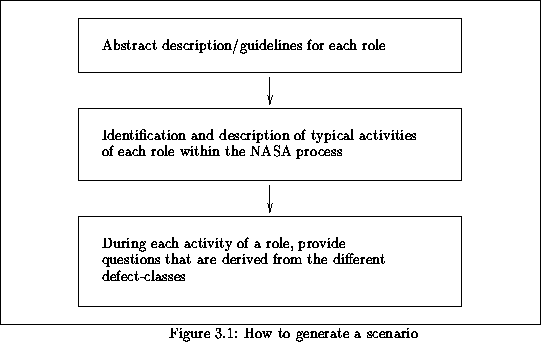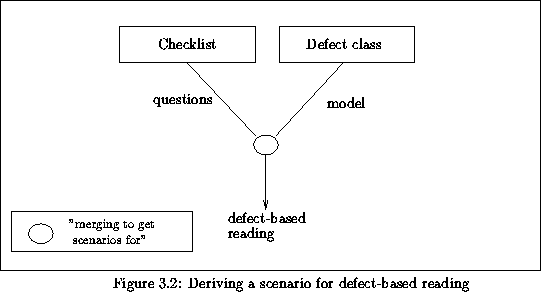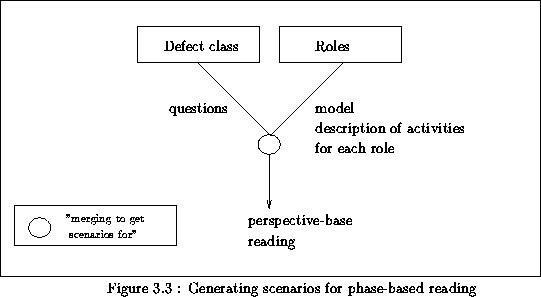



Up: Perspective-based Reading
Previous: Description of the
The efficiency of this reading technique is determined by the scenarios.
A scenario describes certain activities that should be performed by
the reader while reading the documents. In addition to the activities
the scenario contains some questions dealing with the activity.
To be much more precise, a scenario is a collection of procedures that
operationalize strategies for detecting defects.
It could be argued that scenarios are another kind of
checklist. A checklist is a set of questions or statements without any hint or
procedural description of how to read a document. As there is no
description in checklists, scenarios have to be separated from them.
The question is how to generate ``good'' scenarios?
The model we use is an abstract description of the different roles
in the software development process. The different roles together
with a set of questions for each of this roles will determine the
scenarios we use for perspective-based reading.
Now the interesting point is:
- Which questions are necessary to support the
different roles (in an abstract form and as far as the
NASA-process is concerned)?
- What about the degree of ``completeness'' of the
questions and activities?
There are several reasons why it is difficult to generate scenarios.
- There are several levels of abstraction in a requirement
document (e.g. you can look at the whole system which
is described by the requirement-document or you
can only look at a function)
- There exists no standard for documenting requirements.
A requirement-document can contain:
- Brief outline
- Definitions (I/O)
- Functional Requirements, Functions Algorithms
- Other aspects that are important for the system...
- Within each role, e.g. tester, several different methods
or techniques for testing can be used.
We have to find on the one hand a set of questions and activities that
can be used for a broad range of requirements documents and that has
on the other hand the detail that the reader of the requirements knows
what to do.
We have used the following process in order to develop the scenarios:

The starting point was an abstract model of the software development
process. Each role within this process was characterized by a set of
high level activities, e.g. ``Make up the testcases'' for the tester.
Then we looked at the NASA process to see how they perform the
activities (if at all!).
In order to ensure that we can find all the
defects, we have used a defect classification scheme. The
classification scheme provides some question for each defect
class. The next step was that we assigned question to each activity of
a role about the results of the activity or the activity itself.
Throughout the development of the scenarios we there were several
questions left open:
- What is the level of detail which is necessary to
support the reader? If the scenario is too detailed it
will become much more of a checklist than it was
intended. If the scenario in not detailed enough it
won't provide any help.
- What are the really important questions that can
expose classes of defects while performing
the activities of each role?
- To what extent should the scenario be tailored to a
specific environment?
At the moment we have decided that the scenarios include questions
that are not too detailed for each activity. The questions don't
describe how to perform the activity. Each scenario can be used in a
broad context. There are only one or two questions which are more
interesting in the NASA environment than in others. The scenarios we
have developed and used can be found in appendix A
- Defect-based-reading
To derive a scenario for defect-based reading a defect
classification scheme was used as a model. The questions to
find the defects of a specific class were derived from a
checklist.

- Perspective-based-reading
To derive a scenario for perspective-based reading the different
roles within the software development process were used as a model.
In addition and as a refinement of the roles questions
characterizing each defect class were used.

In order to validate the effectiveness of
perspective-based reading we have conducted the controlled experiment that is
the focus of this lab package.




Up: Perspective-based Reading
Previous: Description of the
Generated by latex2html-95.1
Mon Jun 24 13:58:35 EDT 1996
Web Accessibility



